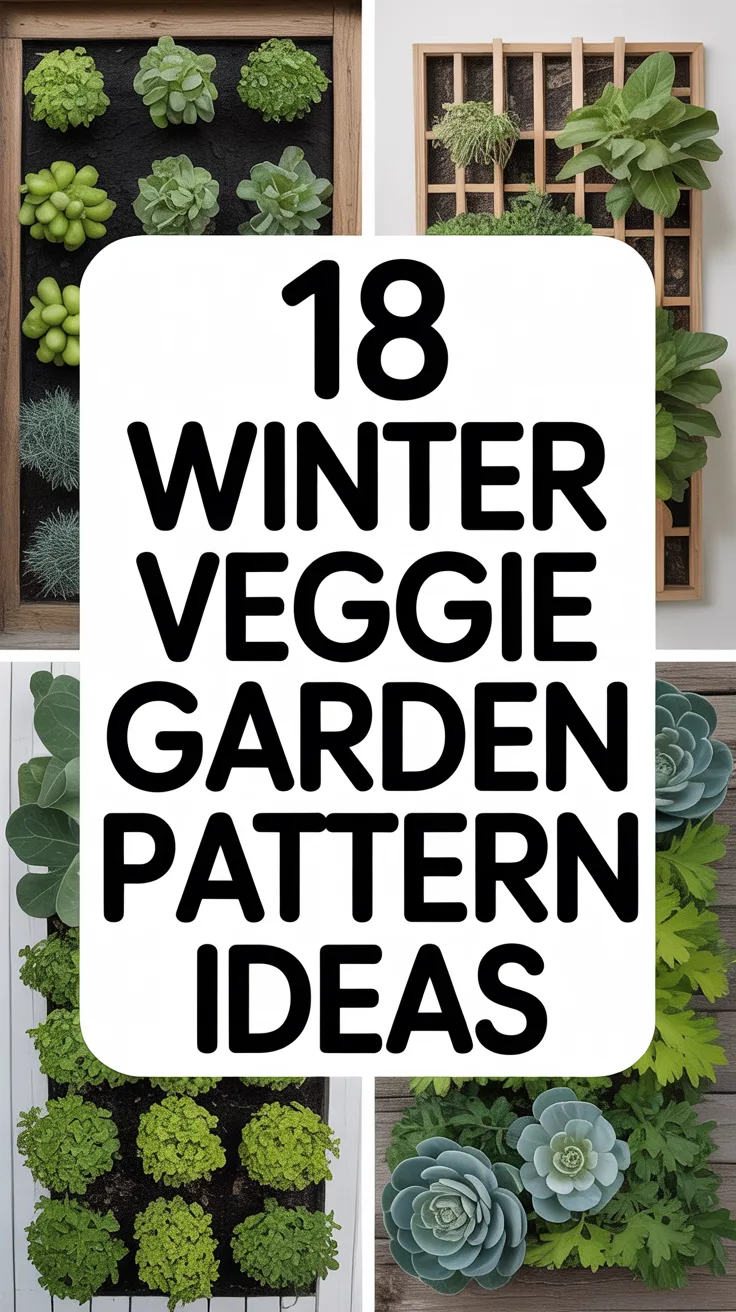As the crisp air of winter settles in, I find myself drawn to the quiet beauty of my garden. There’s something magical about coaxing life from the soil when the world outside feels dormant. I used to think winter gardening was just about tossing a few hardy greens into the ground and hoping for the best, but over the years, I’ve discovered that a winter veggie garden can be a canvas for creativity. By playing with patterns, layouts, and designs, I’ve turned my cold-season plot into a vibrant, productive space that’s as beautiful as it is bountiful. In this article, I’m sharing 18 winter veggie garden pattern ideas that I’ve experimented with, each one a unique twist on growing food through the frost. These ideas are human-made, practical, and designed to inspire you to make your winter garden a masterpiece. Let’s dig in!
Key Facts About Winter Veggie Gardening
- Hardy Crops Thrive in Cold: Vegetables like kale, spinach, Brussels sprouts, carrots, and leeks can withstand frost and even taste better after a chill.
- Soil Protection is Key: Using mulch, row covers, or cold frames helps maintain soil warmth and protects plants from harsh weather.
- Patterns Enhance Efficiency: Thoughtful layouts maximize space, improve access, and create visual appeal.
- Seasonal Planning Matters: Winter gardens require crops suited for short days and low temperatures, typically planted in late summer or early fall.
- Sustainability Boost: Winter gardening reduces reliance on store-bought produce and extends your growing season.
18 Winter Veggie Garden Pattern Ideas
1. The Classic Grid Garden
I started my winter gardening journey with a simple grid pattern, and it’s still a favorite for its no-fuss structure. I divide my plot into equal squares, each hosting a different veggie like kale, spinach, or beets. The tidy rows make weeding and harvesting a breeze, and the symmetry is oddly satisfying. Last winter, I planted alternating squares of red cabbage and leeks, and the contrasting colors made my garden look like a checkerboard even under a dusting of snow.
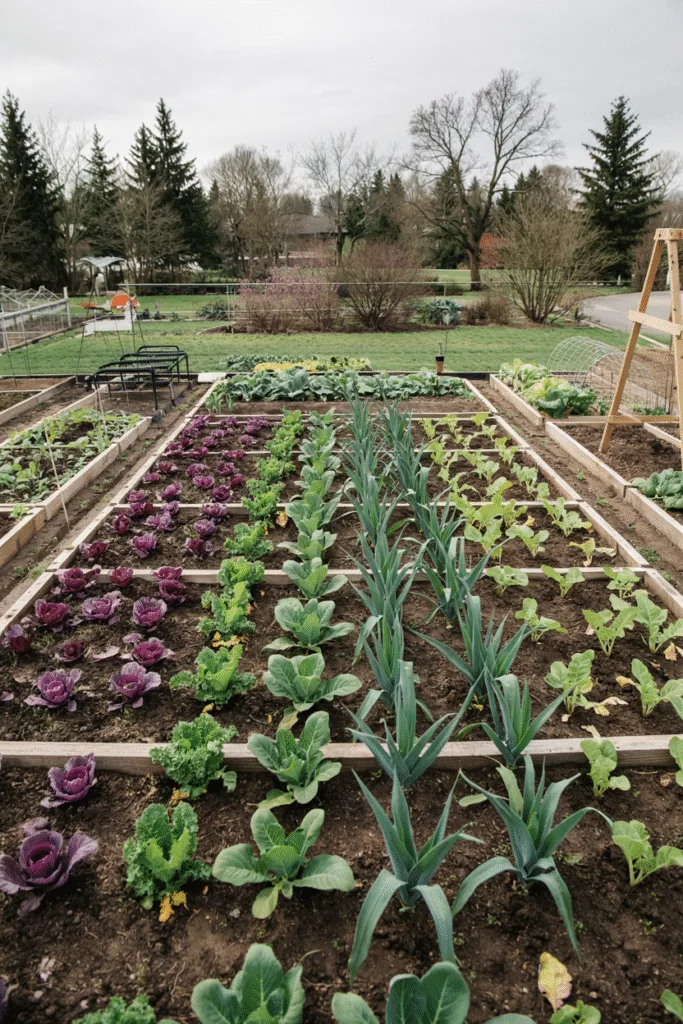
2. Spiral Herb and Veggie Combo
One year, I got adventurous and created a spiral garden inspired by herb spirals I’d seen online. I built a low, winding stone wall that spiraled inward, filling each curve with winter-hardy herbs like parsley and cilantro alongside veggies like Swiss chard. The spiral traps heat, creating microclimates that keep plants cozy. Walking the spiral to harvest feels like a little winter ritual, and it’s a stunning focal point in my yard.
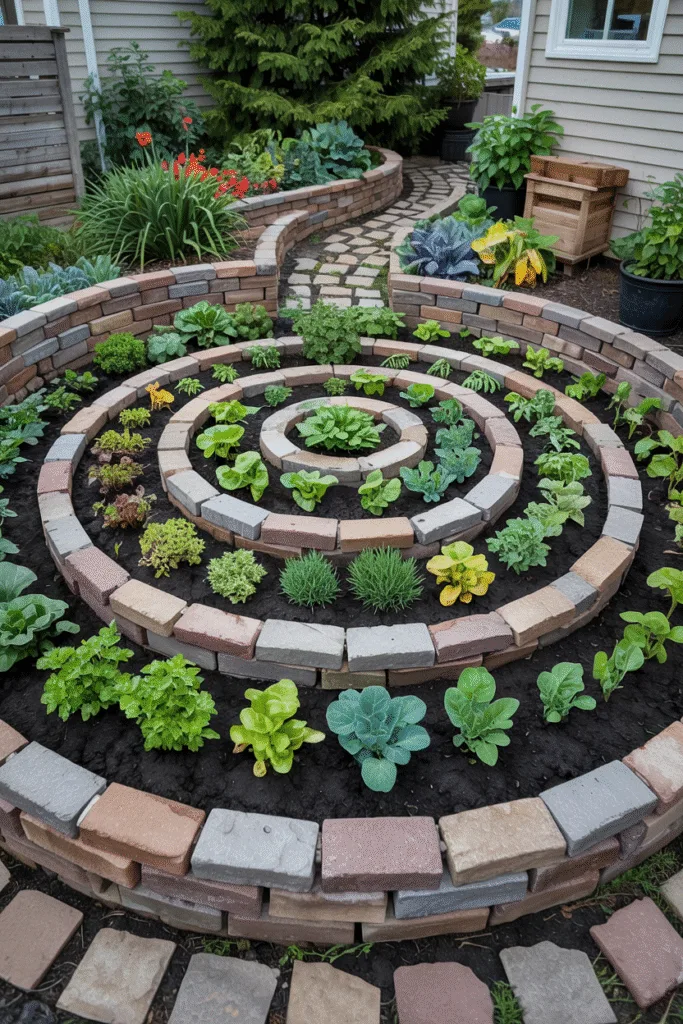
3. Raised Bed Patchwork
Raised beds are my go-to for winter because they warm up faster than ground soil. I arrange them in a patchwork quilt pattern, with rectangular beds of varying sizes. Each bed holds a single crop—think carrots in one, parsnips in another. The raised edges make it easy to cover with plastic sheeting when frost hits, and the layout feels like a cozy quilt spread across my garden.
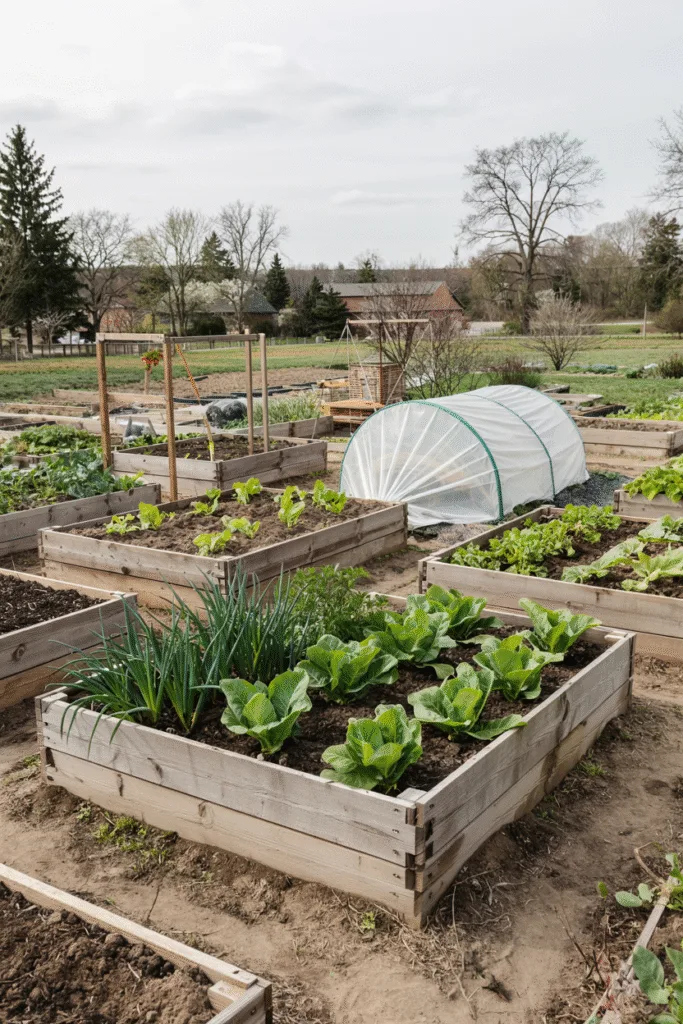
4. Circular Mandala Garden
I once spent a weekend sketching out a mandala-inspired garden, and it’s one of my proudest creations. I marked out concentric circles with paths radiating like spokes. Each ring held a different crop—kale in the center, surrounded by spinach, then radishes. The circular design maximizes space and feels almost meditative to tend. It’s a conversation starter when neighbors peek over the fence!
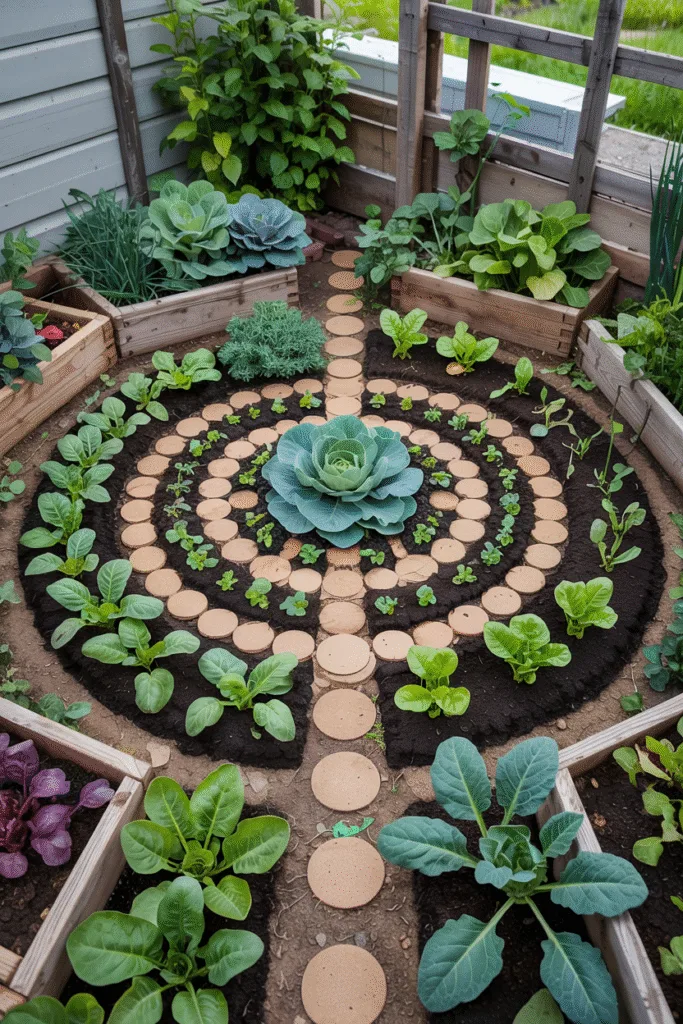
5. Keyhole Garden
A keyhole garden changed how I thought about winter space. I built a circular bed with a notch cut out for easy access to the center, where I placed a compost basket to enrich the soil. Around it, I planted cold-tolerant greens like arugula and mustard. The compost keeps the soil warm, and the shape makes every plant reachable without stepping on the bed. It’s practical and feels like a hug from the earth.
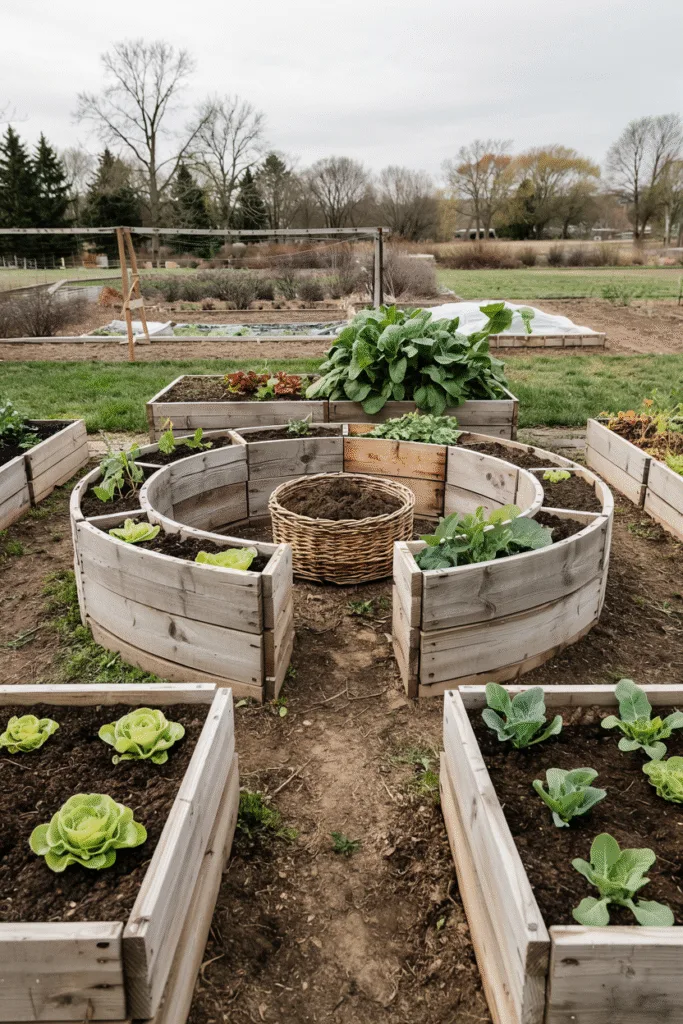
6. Vertical Wall Garden
When my backyard space got tight, I turned to a vertical wall garden. I mounted wooden pallets on a sunny fence and filled them with pockets of soil for spinach, lettuce, and herbs. The vertical design saves space and adds a lush, green backdrop to my winter patio. I love how it makes my small garden feel like a living piece of art.
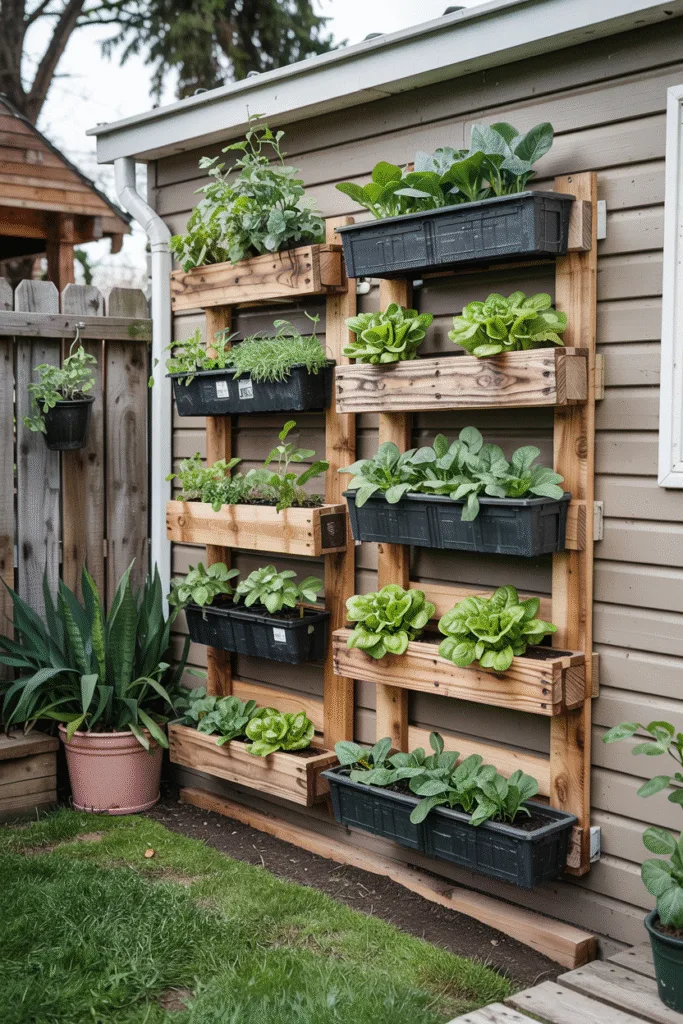
7. Hexagonal Mosaic Pattern
Inspired by honeycomb, I tried a hexagonal pattern one winter, creating small, six-sided beds arranged in a mosaic. Each hexagon held a different crop, like turnips or collards. The tight arrangement conserved heat, and the geometric look was a showstopper. I used straw mulch to insulate the gaps, which kept my plants snug through January’s chill.
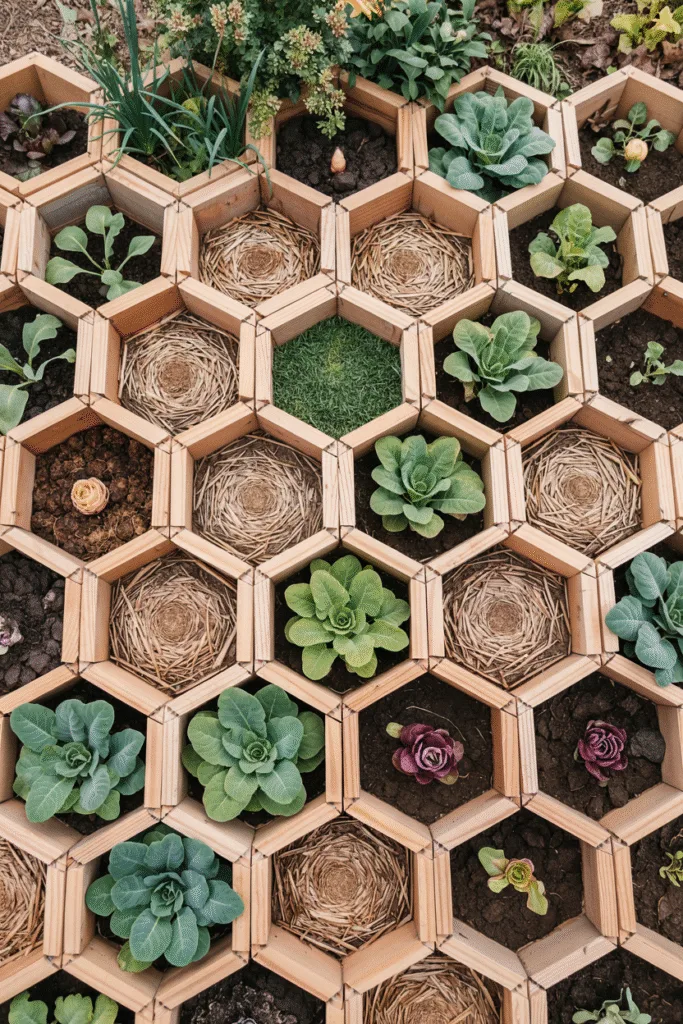
8. Winding Pathway Garden
I love wandering through my garden, so I designed a winding path pattern with curved beds snaking around a central walkway. I planted hardy root veggies like carrots and beets along the edges. The curves soften the harshness of winter, and the path makes it easy to check on plants without trudging through mud.
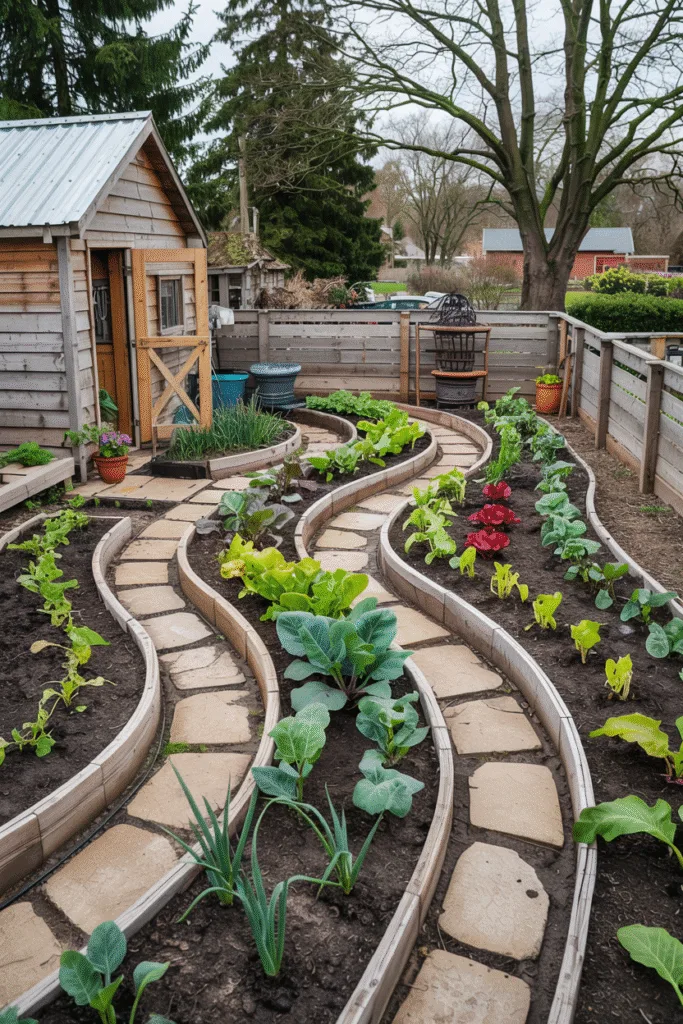
9. Tiered Terrace Garden
On a sloped part of my yard, I built terraced beds, each tier holding a different winter crop. The lowest tier had kale, the middle had leeks, and the top had garlic. The terraces trap warmth and prevent runoff, and the layered look gives my garden a dramatic flair, like a veggie amphitheater.
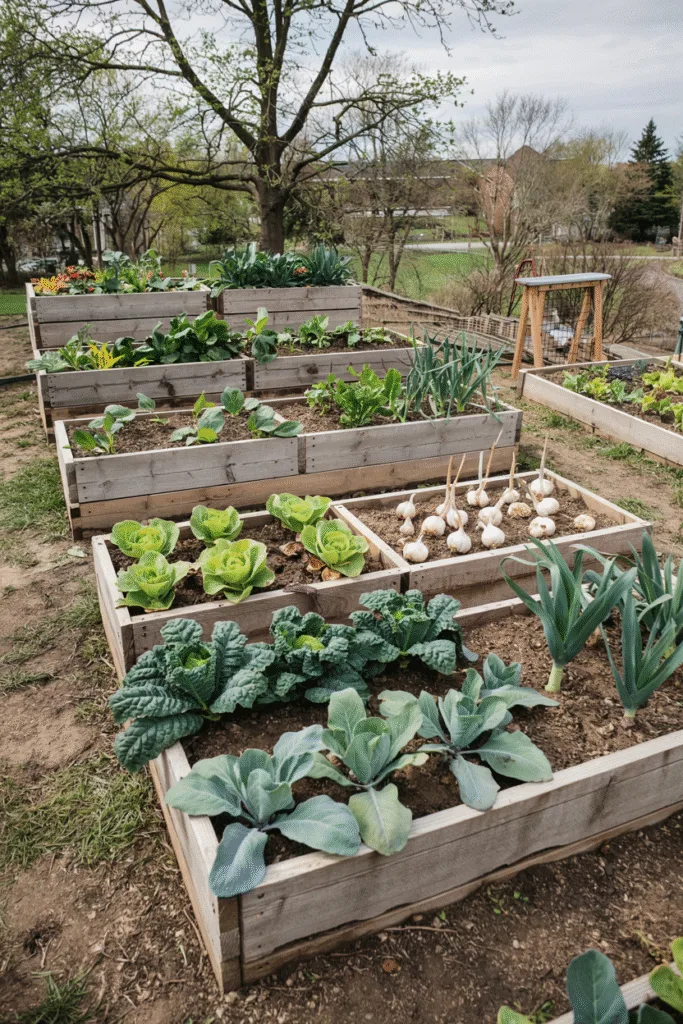
10. Checkerboard Crop Rotation
To keep my soil healthy, I use a checkerboard pattern for crop rotation. I alternate squares of nitrogen-fixing cover crops like clover with veggies like Brussels sprouts. Each season, I shift the crops to new squares. It’s a practical way to maintain soil fertility, and the alternating textures create a striking visual contrast.
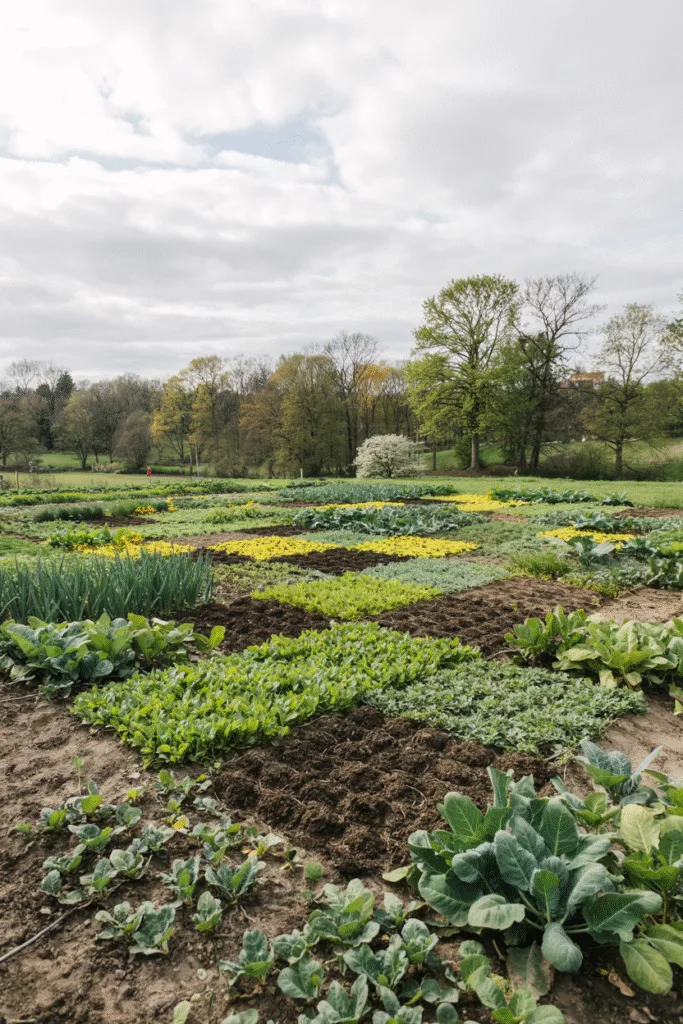
11. Sunburst Radial Garden
One winter, I got creative with a sunburst pattern, planting veggies in radiating wedges from a central point. I placed taller crops like Brussels sprouts in the center and shorter ones like lettuce on the outer edges. The radial design catches sunlight efficiently, and it’s a joy to look at from my kitchen window.
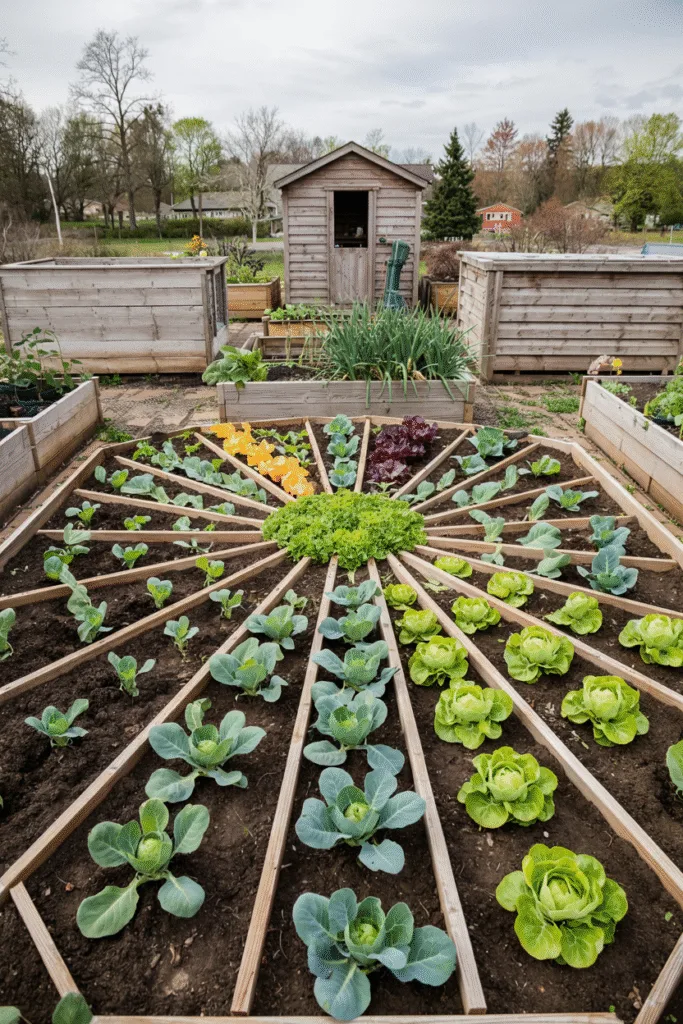
12. Companion Planting Puzzle
I love experimenting with companion planting, so I designed a puzzle-like pattern where each “piece” pairs complementary plants. For example, I planted garlic near kale to deter pests, and carrots beside leeks for mutual growth benefits. The interlocking shapes make the garden feel like a living jigsaw, and the plants thrive together.
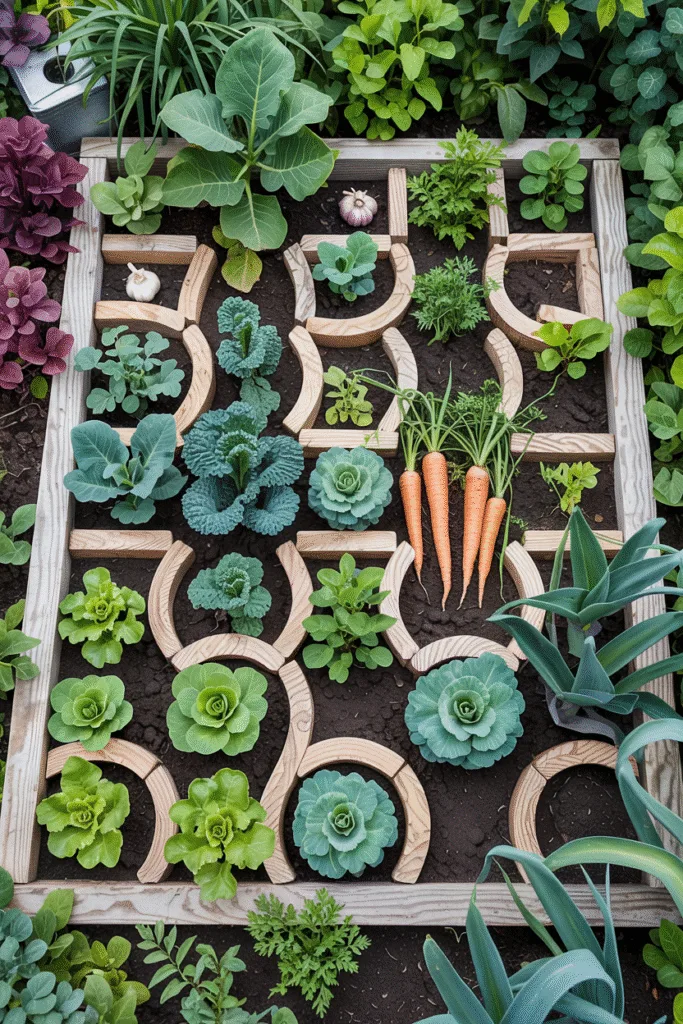
13. Bordered Edible Hedge
To add structure, I created a garden with a “hedge” of winter greens like collards and kale around the perimeter, with root veggies like radishes inside. The outer greens act as a windbreak, protecting the inner crops. It’s functional and gives my garden a polished, framed look.
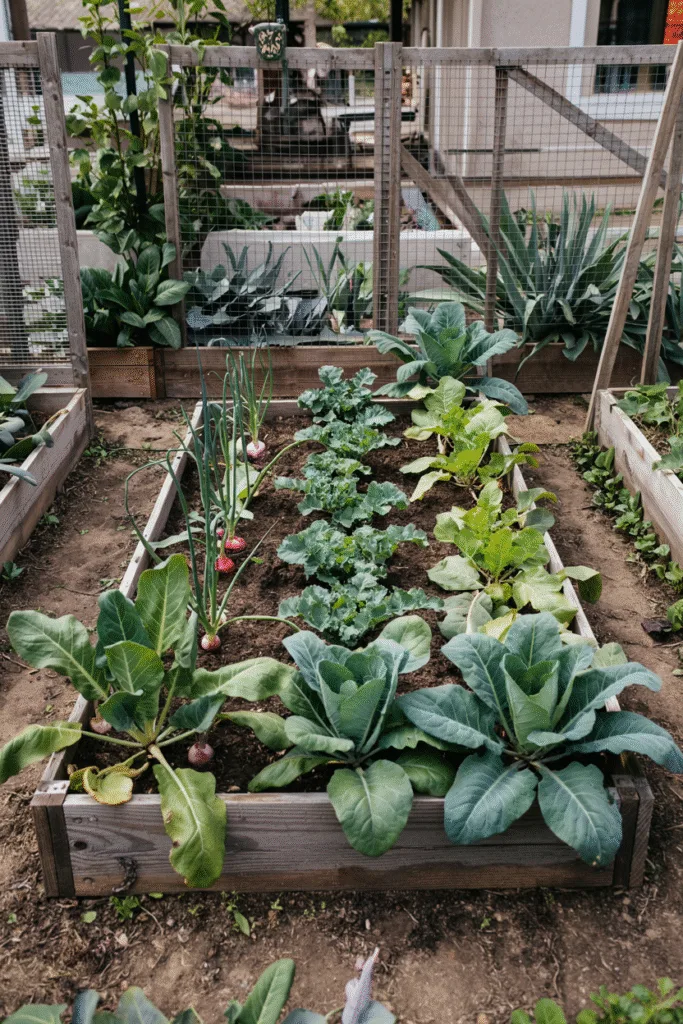
14. Stepping Stone Garden
I laid flat stones in a grid pattern, leaving soil patches between them for planting. Each patch held a small cluster of veggies like spinach or beets. The stones keep my boots clean during wet winters and add a rustic charm. Plus, they absorb heat during the day, warming the soil at night.
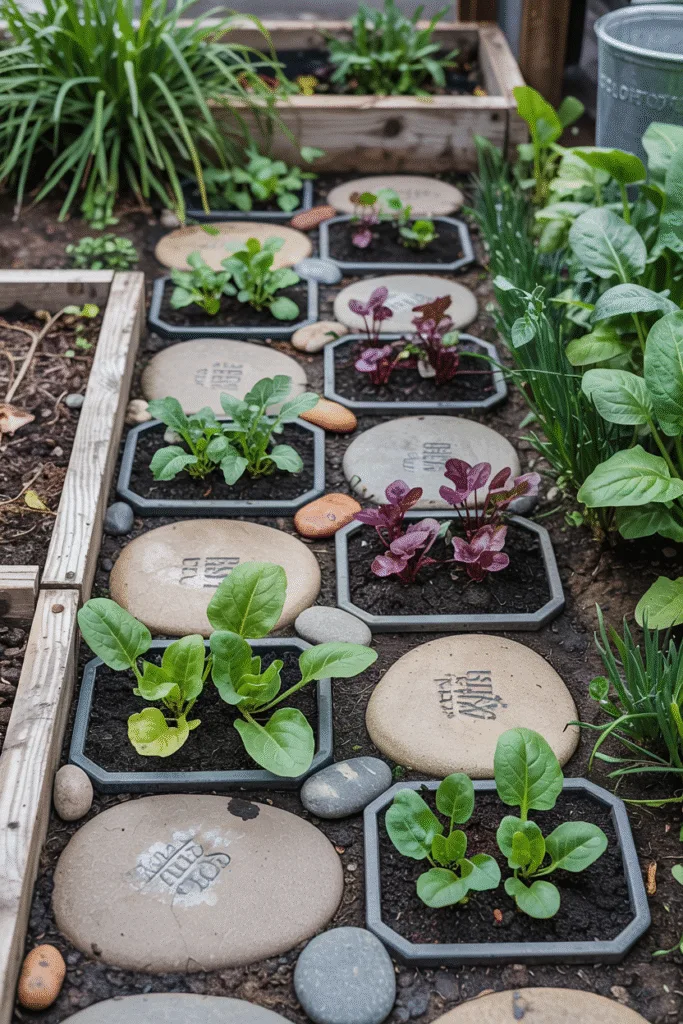
15. Diamond Lattice Garden
A diamond lattice pattern gave my garden a sophisticated edge one winter. I marked out diamond-shaped beds, planting crops like turnips and parsnips in each. The diagonal lines create a sense of movement, and the layout makes efficient use of space while looking elegant.
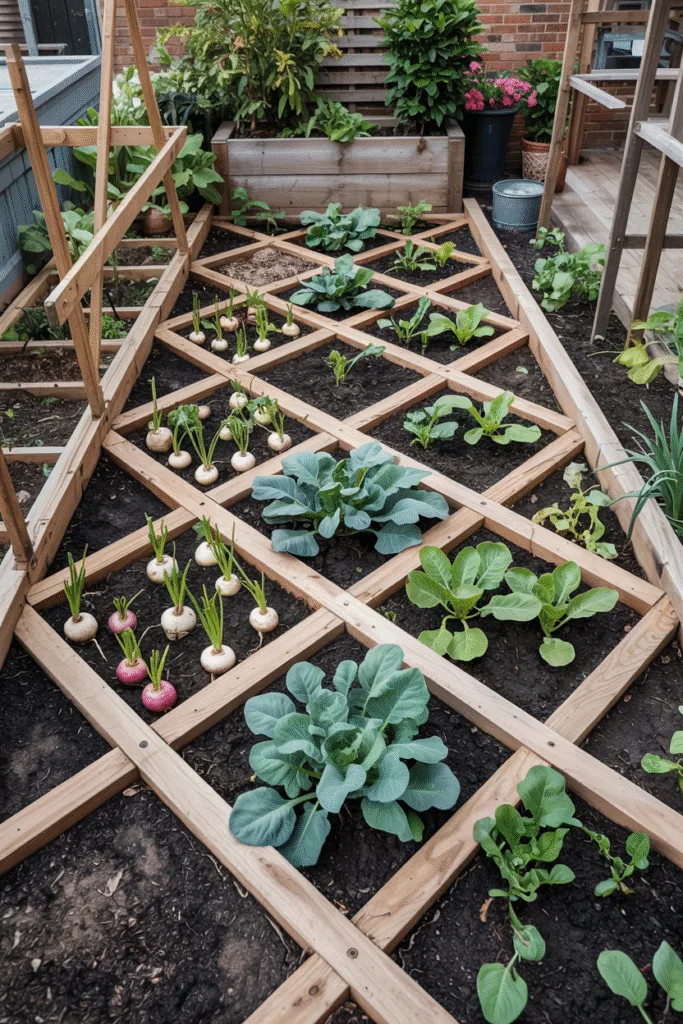
16. Spiral Mound Garden
Inspired by ancient earthworks, I built a low, spiraling mound of soil and planted winter veggies along the curves. The raised spiral retains heat and drains well, perfect for root crops like carrots. Tending it feels like walking a labyrinth, and it’s a unique twist on traditional beds.
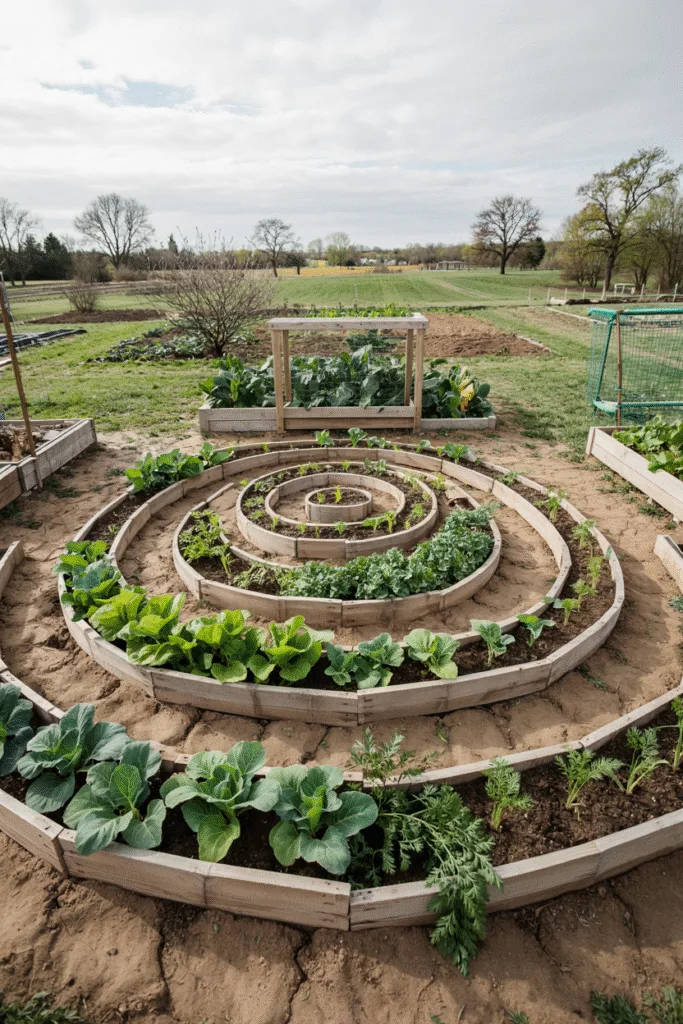
17. Polka Dot Micro-Gardens
For a playful take, I created small, circular “polka dot” beds scattered across my plot. Each dot held a single crop, like a cluster of radishes or a patch of arugula. The randomness adds whimsy, and it’s easy to experiment with different veggies in each circle.
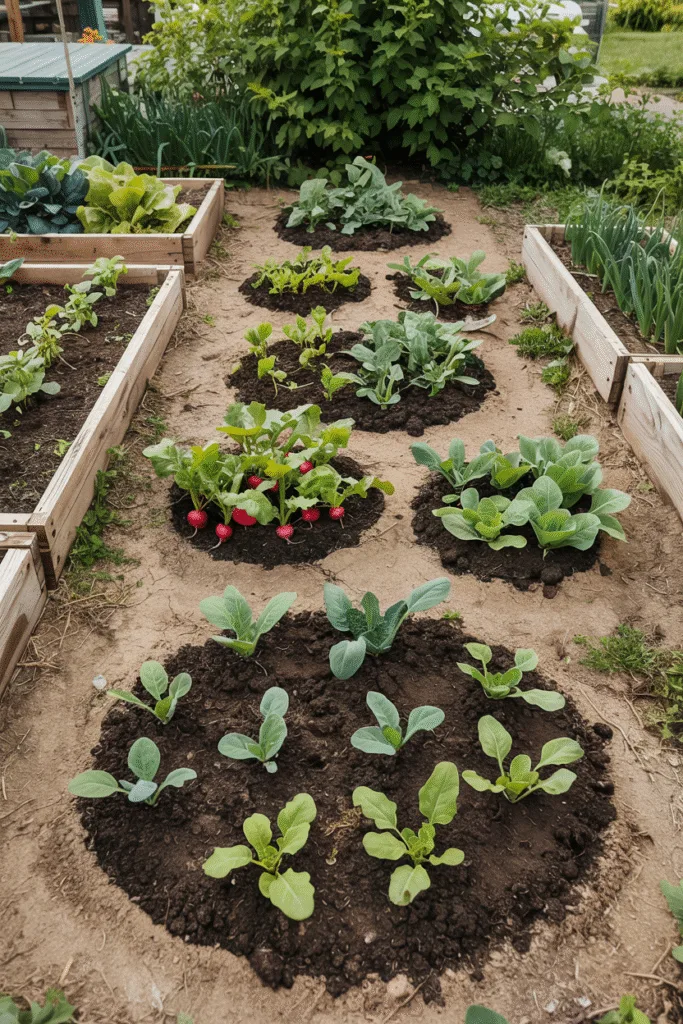
18. Linear Row Cover Garden
When I wanted simplicity with protection, I went for long, straight rows covered with low tunnels of plastic sheeting. I planted spinach, kale, and lettuce in the rows, and the covers kept them frost-free. The linear design is practical for large harvests, and the tunnels create a greenhouse-like effect.
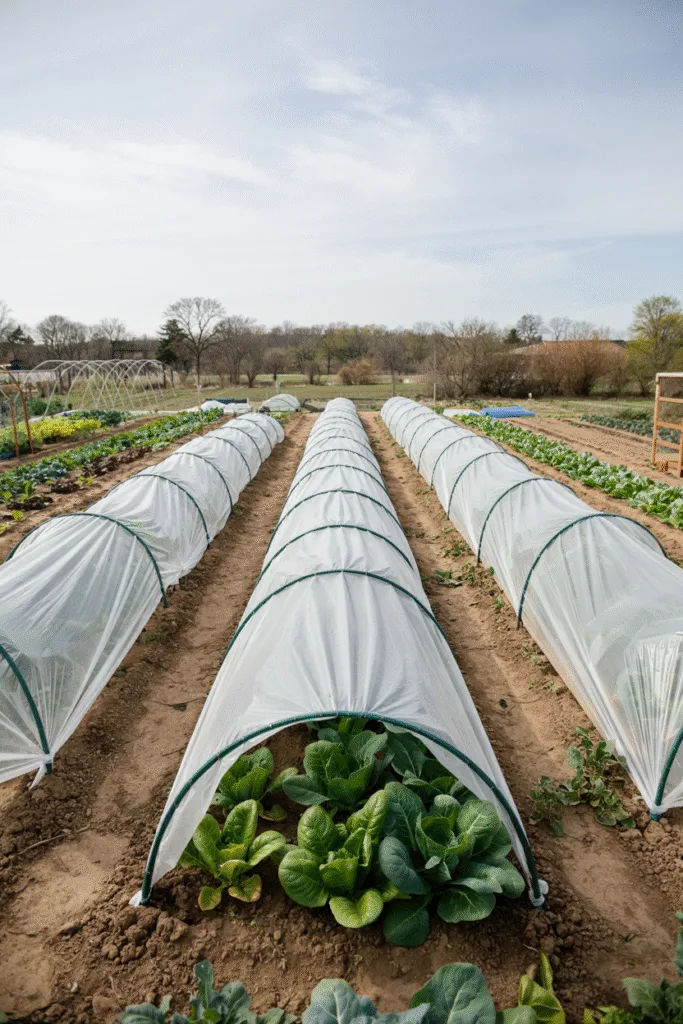
FAQs About Winter Veggie Garden Pattern Ideas
Q: What vegetables are best for winter gardening?
A: Hardy crops like kale, spinach, Brussels sprouts, carrots, leeks, parsnips, and radishes thrive in cold weather. Some herbs, like parsley and cilantro, also do well.
Q: How do I protect my winter garden from frost?
A: Use mulch, row covers, cold frames, or low tunnels to insulate plants. Raised beds and strategic patterns like spirals or hexagons can also trap heat.
Q: Can I start a winter garden in late fall?
A: Yes, but choose fast-growing crops like spinach or radishes, and use protective covers. For most winter crops, late summer or early fall planting is ideal.
Q: Do patterns affect plant growth?
A: Patterns optimize space, sunlight, and soil warmth, which can boost growth. They also make maintenance easier, indirectly supporting healthier plants.
Q: How much space do I need for a winter garden?
A: Even a small space works! Vertical, spiral, or micro-garden patterns are great for limited areas, while larger plots suit grids or rows.
Conclusion: Crafting Your Winter Masterpiece
Winter veggie gardening has become my passion, not just for the fresh produce but for the joy of creating something beautiful in the coldest months. Each of these 18 patterns—from the practical grid to the whimsical polka dots—has taught me something new about working with the season’s challenges. I’ve loved watching my garden evolve into a space that’s both functional and artistic, and I hope these ideas spark your own creativity. Whether you’re a beginner or a seasoned grower, there’s a pattern here to make your winter garden thrive. So grab your gloves, sketch out a design, and let’s make this winter the season your garden shines!

